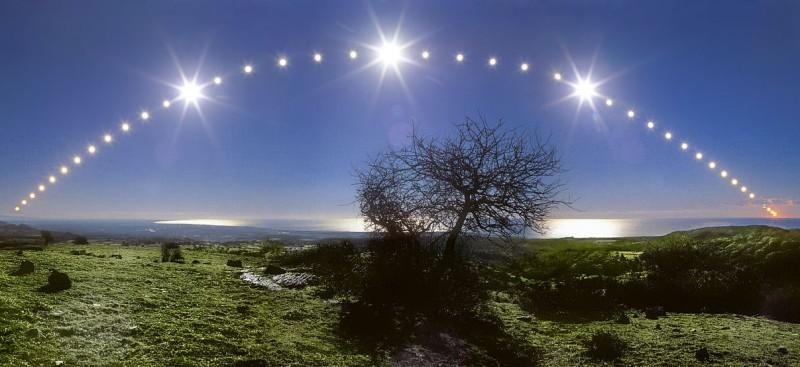Did you know that solar energy is at the root of many holiday traditions? December is a time for celebrating faith, family…and the power of the sun!
Each December, people of nearly every culture around the world celebrate a significant holiday. In the Christian community, Christmas is a celebration of the birth of Jesus of Nazareth. Jews celebrate Hanukah. In the Hindu world it is the time for the celebration of Diwali, and for followers of Islam, it is Eid-al-Adha. In China, it is Dongzhi, and Kwanzaa is a pan-African celebration also observed in December. For many ancient cultures, though, December was a time for festivals marking the winter solstice, the shortest day of the year, and celebrating the beginning of the gradual return to longer days and shorter nights. For those of us in the solar business, more hours of sunlight is a reason to celebrate as well!
The gathering of family and friends to celebrate faith and community is a welcome break from the long, dark winter, no matter your cultural heritage. But many of us don’t really know the roots of some of our winter holiday traditions. For instance, in many cultures, the winter festival is known as a “Festival of Lights.” The tradition of decorating with candles or torches goes back to ancient times, when the long, dark nights were difficult and dangerous, especially in agricultural communities. At the time of the winter solstice (December in the Northern Hemisphere, June in the Southern Hemisphere), ancient people going back to Neolithic times gathered together on the shortest day of the year to light up the long night with the warmth of fire and fellowship.
Saturnalia was the winter feast of ancient Rome which occurred in the week leading up to December 25th. Celebrating the agricultural god Saturn, Saturnalia was a time of feasting and exchanging gifts. Other traditions like decorating with greenery and trees is also thought to date back to Saturnalia, as many of the pagan traditions were kept alive even after the advent of the Holy Roman Empire.
Dongzhi is the winter solstice feast in China and much of east Asia. Again, agricultural in origin, it is a time for gatherings to eat special foods that are not prepared at any other time of the year. In India, Malaysia, Sri Lanka and other Asian countries, Diwali is celebrated to mark historical events, tell stories and myths. The myths celebrate the victory of light over darkness, knowledge over ignorance, good over evil, hope over despair.
As you can see, many, if not all of our winter festivals are attached to the in the seasonal movement of the sun. Much like our agricultural forbearers who relied on the sun for their livelihoods, solar businesses see a natural slow-down at this time of the year. Systems in northern regions are at the lowest point in their daily production. In colder areas, performing installations become more challenging, and work slows down. And like the farmers of ancient times, it is a good time for solar businesses to reflect on the past year and plan for the next.
Solstice Solar Science 101
For those of us in the United States who live in the mid-latitudes, daylight ranges from about 15 hours around the summer solstice to around 9 hours close to the winter solstice. Just why is this?
As we know, the Earth’s axis is not perpendicular to the sun. It is tilted on its axis 23.5 degrees, so that it tilts as it spins, and that tilt changes seasonally in relation to the the sun. On the winter solstice, the northern hemisphere of the planet (everything north of the equator) will face directly away from the sun, putting the North Pole in complete darkness.

This means that the sun crosses the sky at its lowest trajectory as seen from the Northern Hemisphere, and therefor the Northern Hemisphere receives the fewest hours of daylight. Not only are there less hours of daylight, but the intensity of the light varies as well. For instance, In Chicago Illinois, the solar radiation in December is 2.7 kWh/m 2/day. In late June, it is 5.97 kWh/m 2/day. This mean weaker sunlight, and less hours of it.
What does this mean for a solar array? It means dramatically lower output. For instance, if we look at the PV Watts calculator at the National Renewable Energy Laboratory’s website, we will see that a 10kW photovoltaic solar array in Caribou, Maine, could be expected to produce over 1100 kWh per month near the time of the summer solstice, and only about 690 kWh per month in December. In Brownsville Texas, the same array will produce over 1200 kWh per month at the summer solstice, and 740 kWh in December.
Celebrate the Sun!
No matter your faith or cultural heritage, it is easy to see that the energy from the sun is essential to life on our planet. It’s no wonder that our ancestors chose the solstices as times for celebration. Just as farmers have used the sun to grow crops and harvest energy (in the form of calories) modern solar technology harvests the majority of its “crop” in the summer months. Now that winter is upon us and life has slowed down for a while, let’s take the time to be thankful for all that we have. Family, Friends… and the bountiful energy of the sun! Happy Solar Holidays!!







